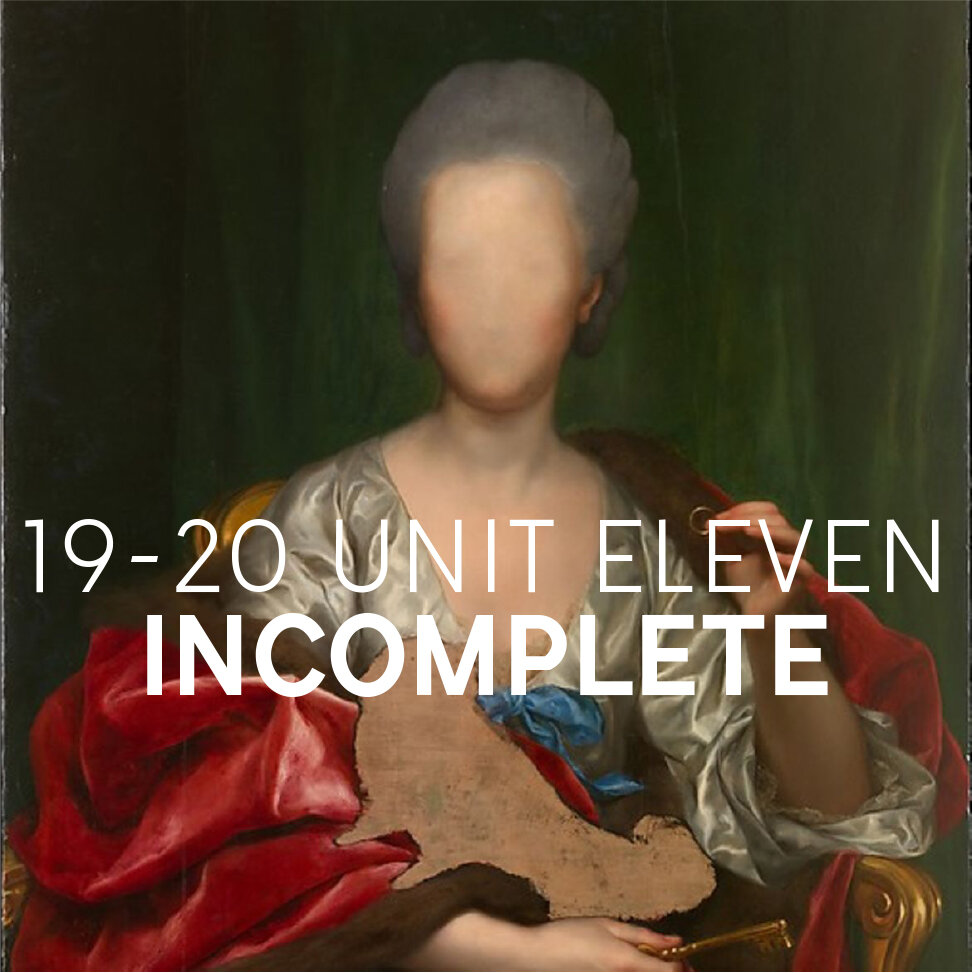
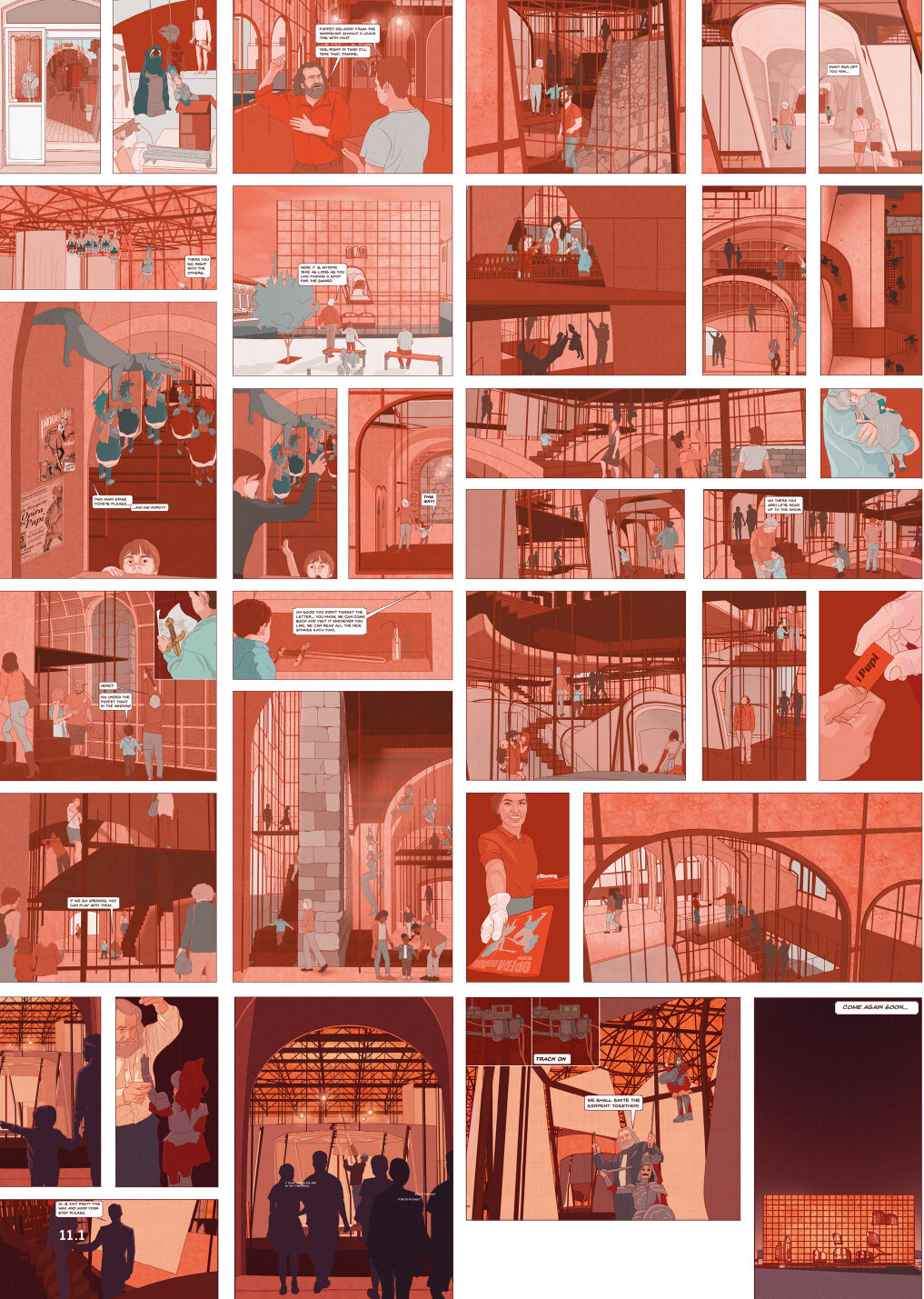
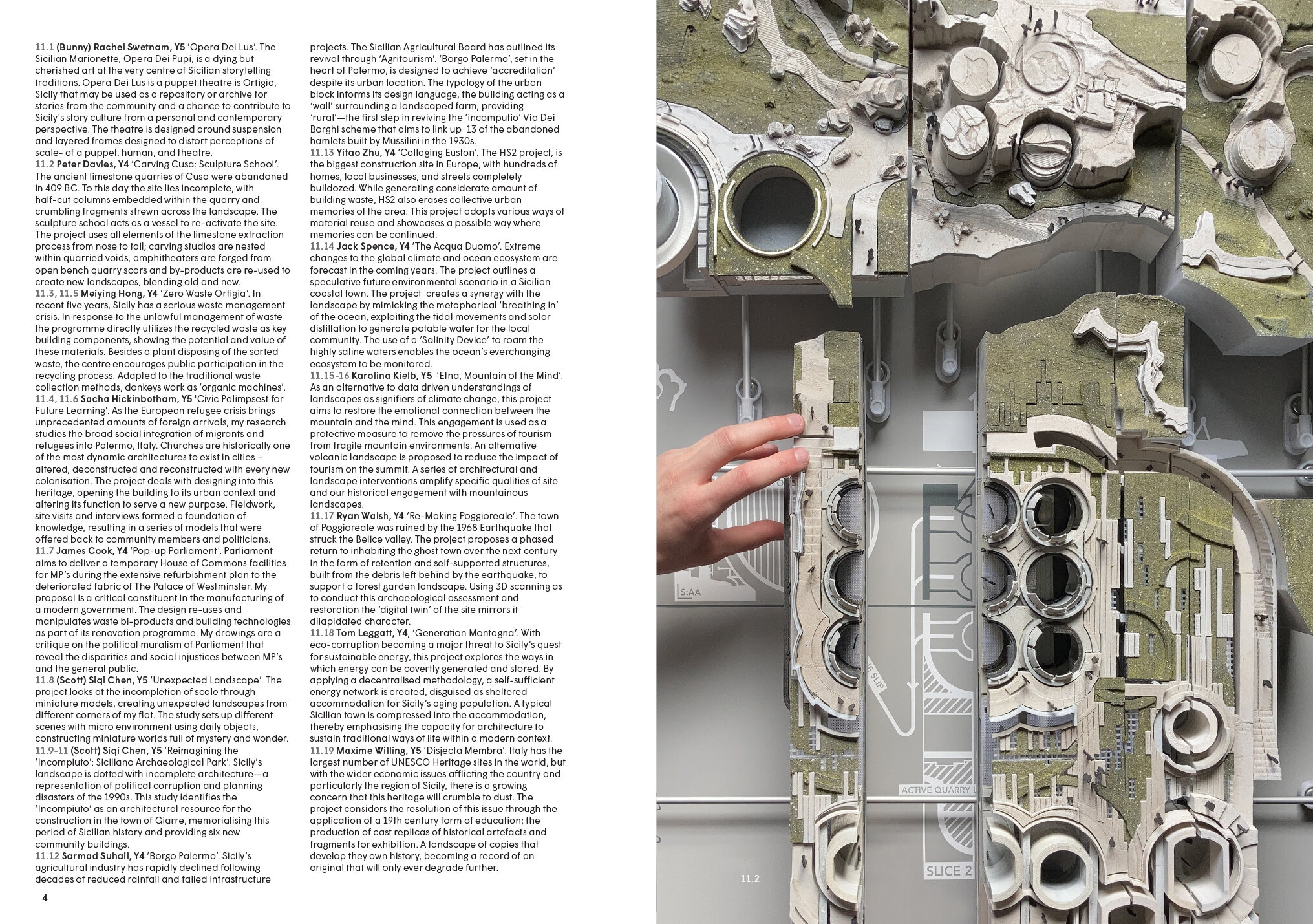
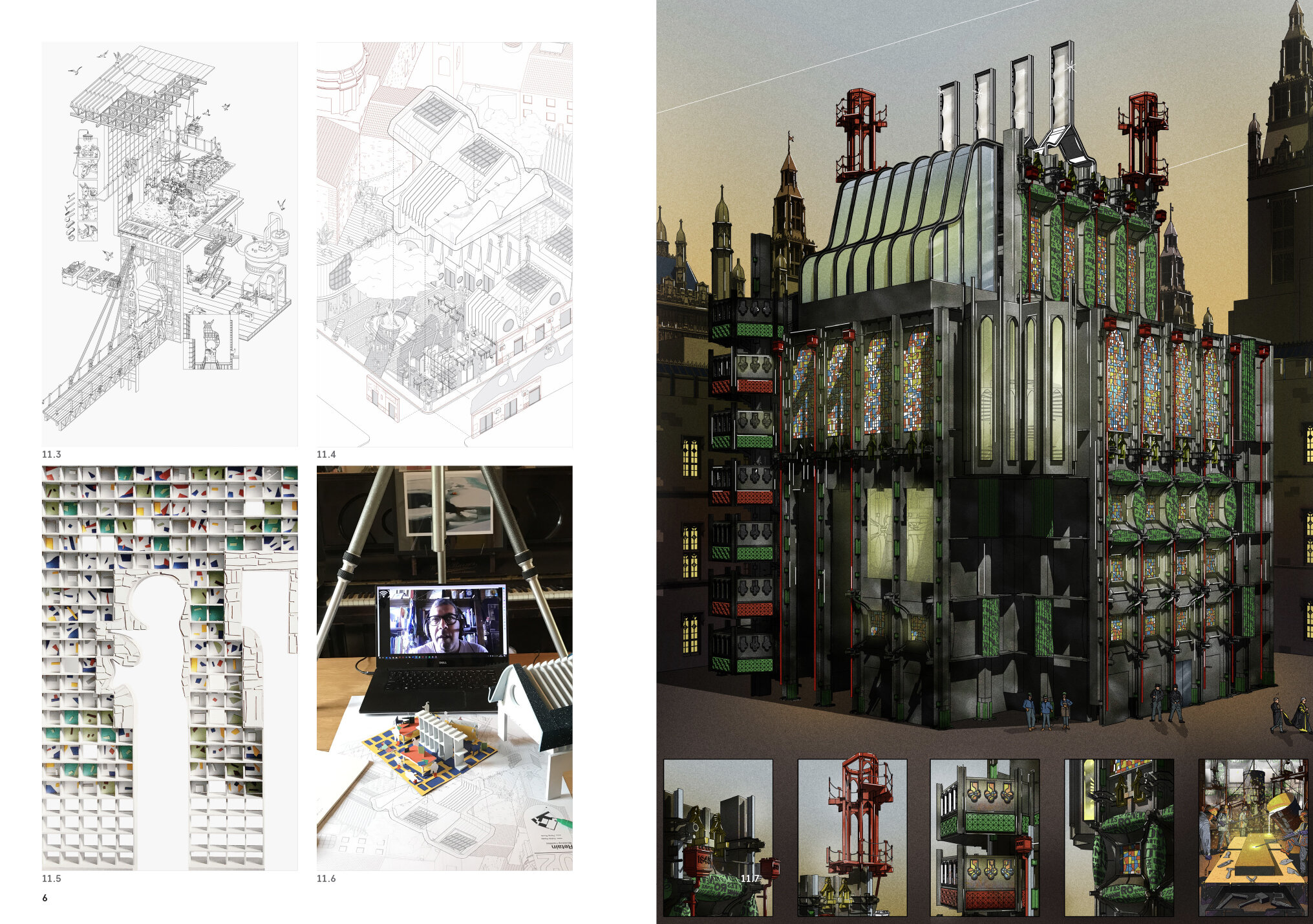
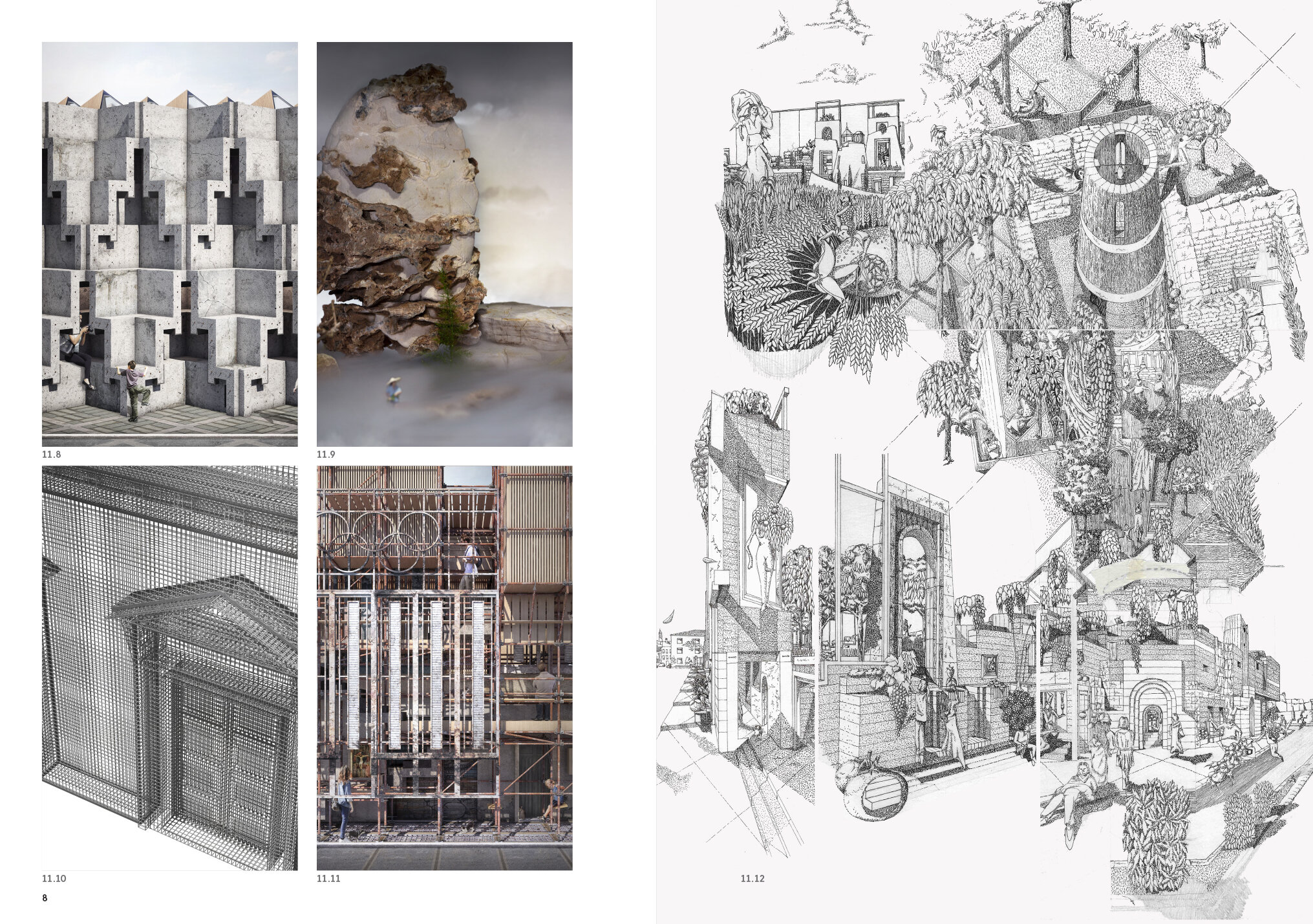
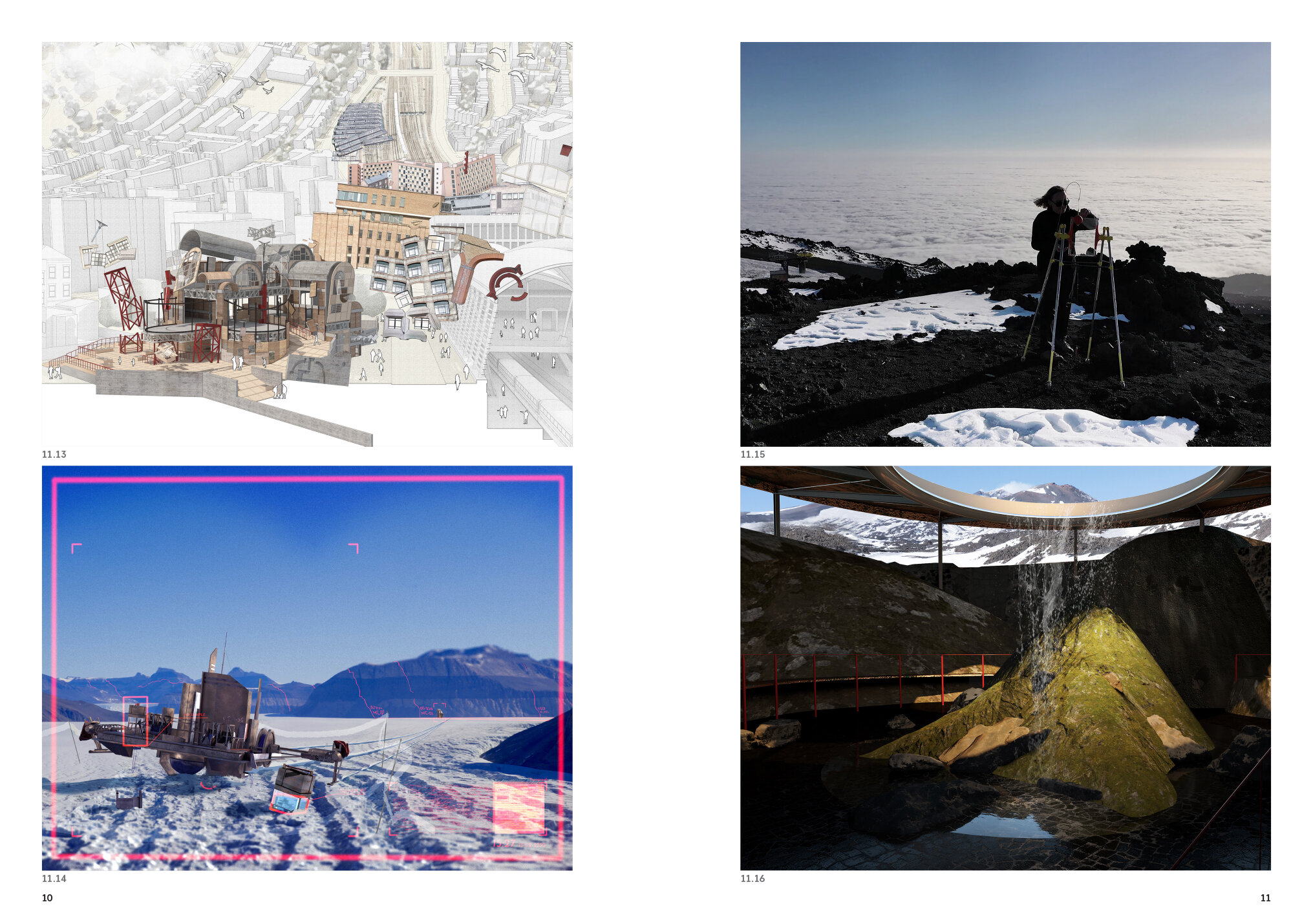
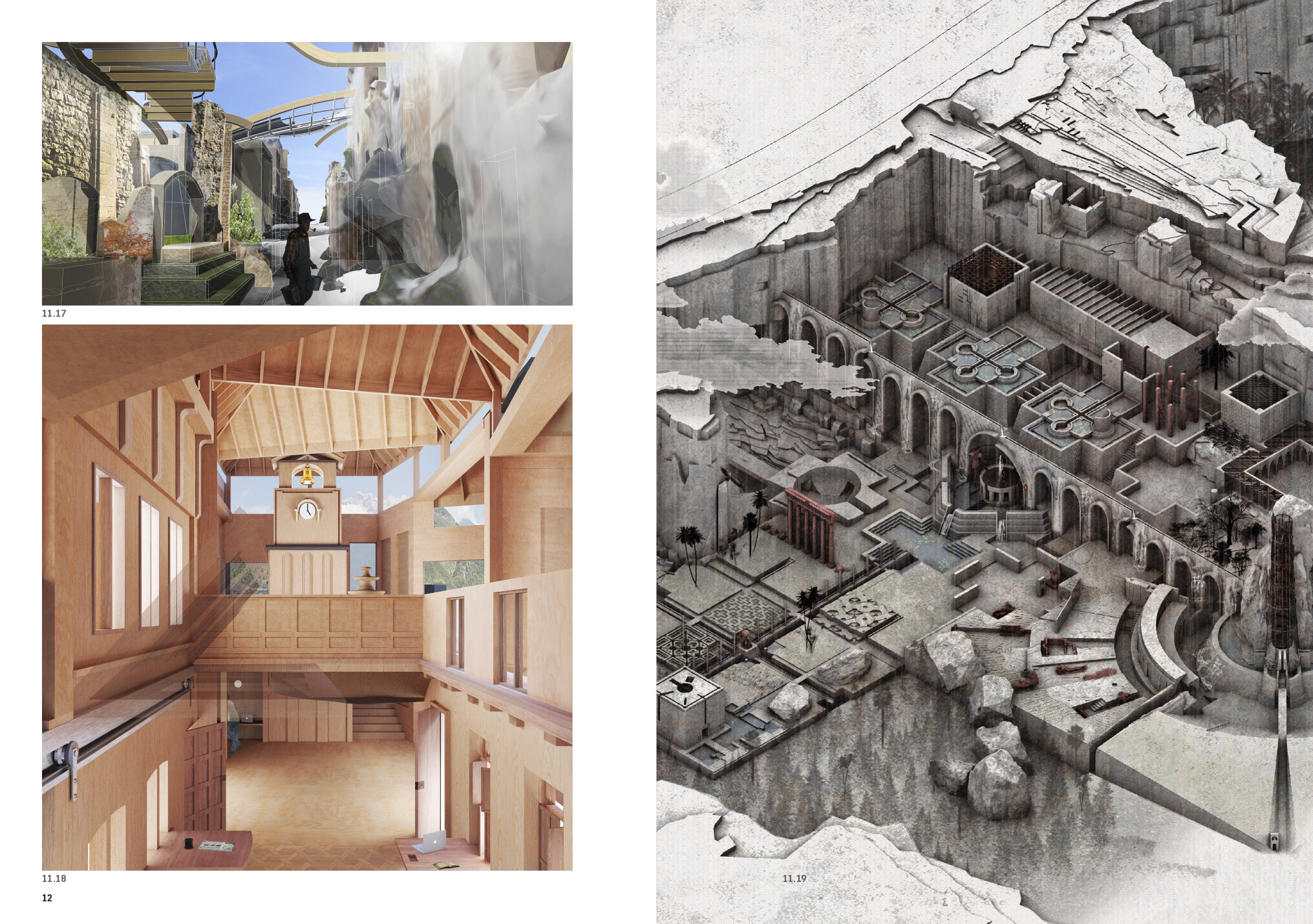
Incomplete
Incompleteness, whether intentional or accidental, brings opportunities for reinvention. This year we rebooted stories of change and adaptation, of bold ideas and incomplete visions. The intriguing qualities of the incomplete invite alternative futures. Unresolved stories lead inevitably to new endings with substitute narratives. In the worlds of architecture, music and art, incompleteness carries with it the tantalizing indications of the creative process. Drawing on this back catalogue of defunct imaginings, unbuilt and incomplete buildings and the ruins of obsolete architecture, we listened, adapted and reimagined, creating alternative futures and future pasts, designing new relationships with historic and contemporary contexts.
Our work is informed by stories from Sicily—the site for our field trip and major projects—which demonstrate architecture’s responsive and fluctuating relationship with landscape, politics, culture and environment, four critical territories of engagement.
‘Incompiuto Siciliano’
Partially constructed architecture—abandoned in a state of unreadiness, is so widespread in Italy and Sicily that there have been calls for it to be distinguished as its own architectural style— ‘Incompiuto’. Deserted stadia, hospitals that were never occupied and skeletons of structures forsaken mid-construction, their futures suspended in time, stand as ruins of modernity. Bridges, theatres, churches, and numerous other public works were planned to revitalize communities and capture available funds before they ran out. Hundreds of buildings were subsequently aborted at every stage of construction, these now obsolete architectures, their futures interrupted, became instant ruins. Some have been revived by unplanned for activities, but most remain incomplete visions in suspended animation, the legacy of political hubris and economic recklessness. Prince Fabrizio the main protagonist of The Leopard, Sicily’s most famous novel, declares, “Tutto deve cambiare perché tutto rimanga lo stesso.” —Everything must change in order for everything to remain the same. His proclamation refers to Sicily’s 19th century struggle with social change but seems equally apposite today.
But this change is territorial as well as societal. Short-lived volcanic islands in the seas surrounding Sicily, ghost towns, abandoned houses and patched-up structures which pepper the landscape are reminders of Sicily’s long history of geological instability and cataclysmic earthquakes. Rebuilt towns such as Noto stand as near perfect examples of Sicilian Baroque whilst the relocated town of Gibellina Nuova is a part-deserted post-modern experiment in town planning and cultural engineering.
Students have pursued individualised research agendas and projects which include themes around landscape futures, water security, mass migration, corruption, environmental collapse, tourism, preservation versus progress, social inequality, archaeology and agricultural tourism.
5th Year Students: Scott Siqi Chen, Sacha Hickinbotham, Theo Jones, Karolina Kielb, Bunny Swetnam, Maxime Willing.
4th Year Students: James Cook, Peter Davies, Meiying Hong, Tom Leggatt, Jack Spence, Sarmad Suhail, Ryan Walsh, Yitao Zhu.
Prizes and Congratulations
Ambrose Poynter Prize—Maxime Willing
Design Realisation: Fabrication Innovation Prize—Peter Davies
Max Fordham Environmental Design Prize—Scott Siqi Chen
Portfolio Prize—James Cook
